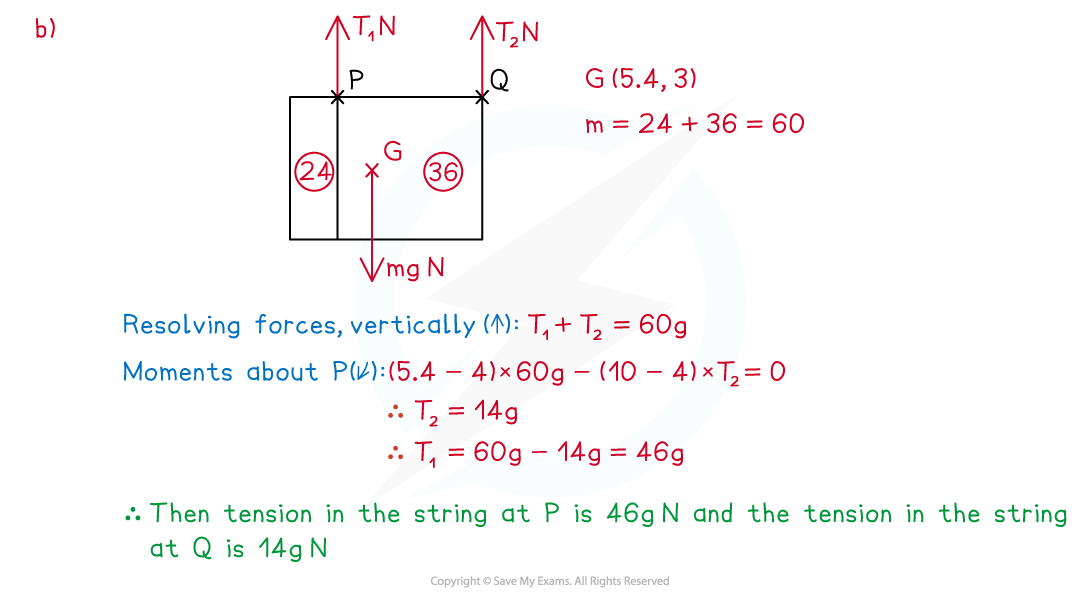Non-unform Objects & Other Problems
What is meant by a non-uniform lamina/framework?
- Strictly speaking a non-uniform lamina would be one that has different densities at different points on its surface and a non-uniform framework would be one that is made from rods/wires that have different densities along their lengths.
- e.g. a plank of wood (timber) may have knots in places on its surface
- However, for the problems you encounter in IAL Mechanics 2 non-uniform means each individual lamina making a composite lamina may be of a different density but each individual lamina is uniform
- Similarly, for a framework, each individual rod/wire will be uniform, but the framework may be made from rods/wires of different densities.
What other problems may I encounter in IAL Mechanics 2 (M2)?
- Non-uniform problems
- Non-uniform (composite) laminas may be created by having uniform laminas overlapping each other or by taking part of a lamina and folding it back upon itself
- Non-uniform frameworks would be made from rods/wires that have different (but related) densities or thickness
- The relationship between the different densities will be explained in a question
- e.g. part of a (uniform) lamina folded back on itself creates an area of double density
- e.g. one cable in a framework is twice the thickness of the others
- In solving problems remember, due to uniformity, we use can use area (laminas) and length (frameworks) rather than mass – so if we have double density, we double the area/length where necessary
- Another type of problem is where a lamina or a framework have an object (or masses) attached to them.
- This will affect the position of the centre of mass of the lamina or framework
- e.g. a framework made from metal rods could be holding up spotlights above a stage and so have lights (masses) attached to some (or all) rods
- This will affect the position of the centre of mass of the lamina or framework
- Problems may involve laminas or frameworks being suspended by more than one string to keep them in a particular position
- e.g. A sign hanging from a ceiling that needs to be pointing directly left
- Such problems normally involved finding the position of the centre of mass and/or the tension in the strings, using skills from various parts of the mechanics course

Worked example
A rectangular uniform lamina has one edge folded back upon itself as shown in the diagrams below.

(a)
Find the coordinates of the centre of mass of the folded lamina
(b)
The folded lamina is suspended from a ceiling by two strings attached at the points P and Q. The folded lamina remains horizontal in equilibrium. Find the tension in the two strings.
(a)
Find the coordinates of the centre of mass of the folded lamina

(b)
The folded lamina is suspended from a ceiling by two strings attached at the points P and Q. The folded lamina remains horizontal in equilibrium. Find the tension in the two strings.

Exam Tip
- Ensure you know whether you are working with a lamina or a framework.
- Folded and overlapping laminas may form shapes that have axes of symmetry which can cut down the work in finding the position of the centre of mass.

